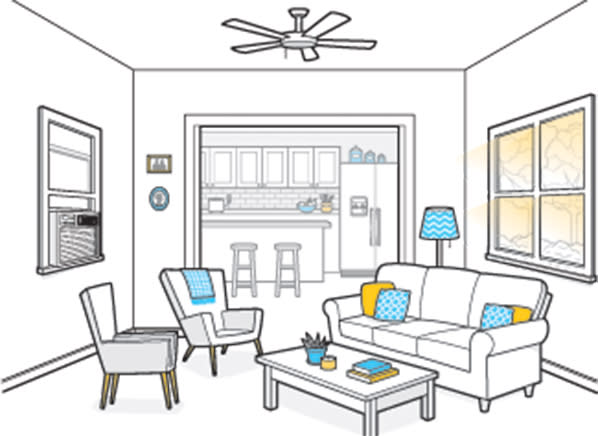Save on cooling costs without breaking a sweat
Tougher federal energy standards mean that today’s air conditioners are a lot more efficient than they used to be and cost less to operate. That’s good news because up to 17 percent of a home’s energy budget goes to cooling. Central air conditioning is common in most parts of the country, but even homes that have it may want a window or portable unit to supplement cooling in a stuffy room or in a work shed, garage, or other uncooled space.
If your cooling system is more than 10 years old, replacing it will bring immediate efficiency gains and drastically cut your costs. The window units on sale today meet strict standards that went into effect last summer. Manufacturers of central A/C systems will have to comply with even tighter energy standards by July 1, 2016. To test room A/Cs, we brought two dozen window air conditioners and a dozen portable units into our labs to put through our comfort evaluations. Here are the details on how to save on cooling costs:
Window A/Cs are worth a look. Small window units are the biggest seller, and we found four to recommend that cooled our testing chamber quickly—and quietly. That’s important because noise is one of the biggest complaints about room air conditioners. GE told us that making units quieter is a priority, and we saw some improvements in our tests.
Like other household appliances, air conditioners are getting smarter and more connected. Friedrich has several models that you can control with your smartphone and claims you can connect multiple units to mimic the feel of central air. Like the Nest thermostat, the Quirky Aros (shown) is designed to learn your routine and adjust its settings accordingly. But its cooling didn’t live up to its cool factor.
‘Portable’ is a misnomer. Weighing between 51 and 82 pounds, portables aren’t easy to move. In our tests we found that the dual-hose models were marginally better than the single-hose units. But neither provided the cooling oomph that you might expect for the price or the Btu/hr. listed on the box.

Buy an air conditioner that's too small and the unit will struggle to keep the room at a comfortable temperature; buy too big and the room will cool too quickly without removing enough humidity from the air. Use these tips to get the right size and save on cooling costs.
Start by taking square footage (length times width).
Add together the size of rooms if they’re not separated by doors; the unit will need to cool both.
Increase capacity by 10 percent for a sunny room.
Use ceiling fans to feel cooler.
This article also appeared in the July 2015 issue of Consumer Reports magazine.
More from Consumer Reports:
10 great gas grills for $300 or less
12 ways to save even more at Costco
Mattresses have changed since you last bought one
Consumer Reports has no relationship with any advertisers on this website. Copyright © 2006-2015 Consumers Union of U.S.


